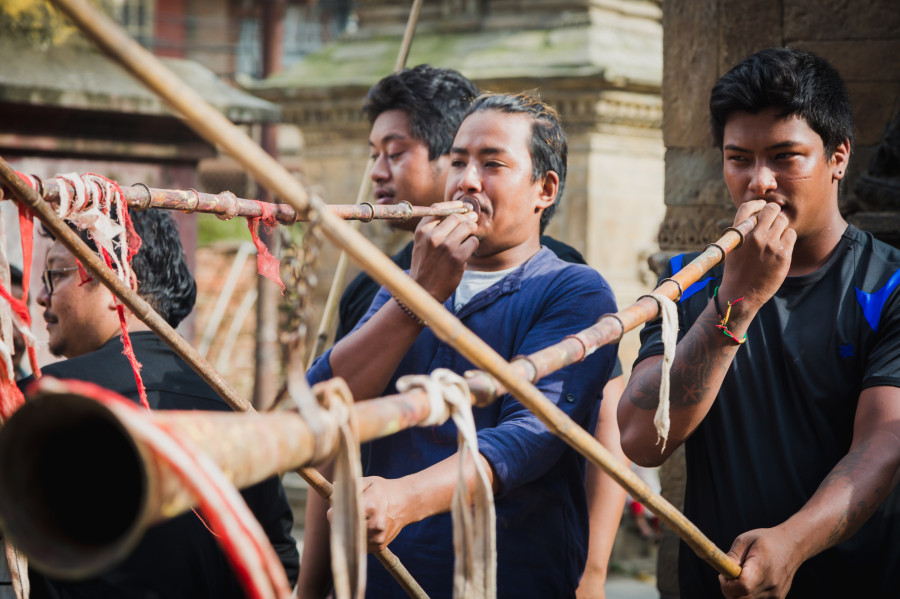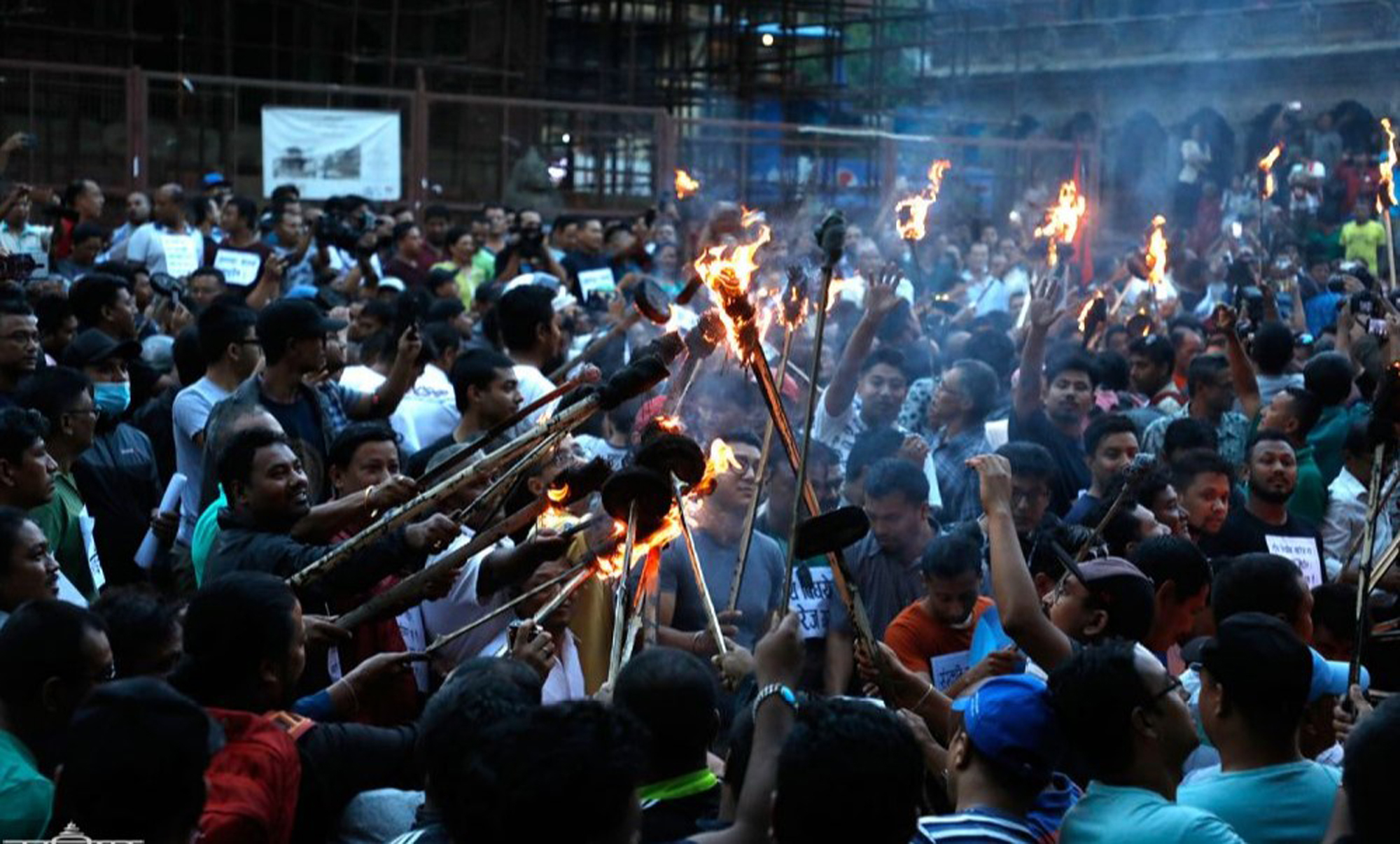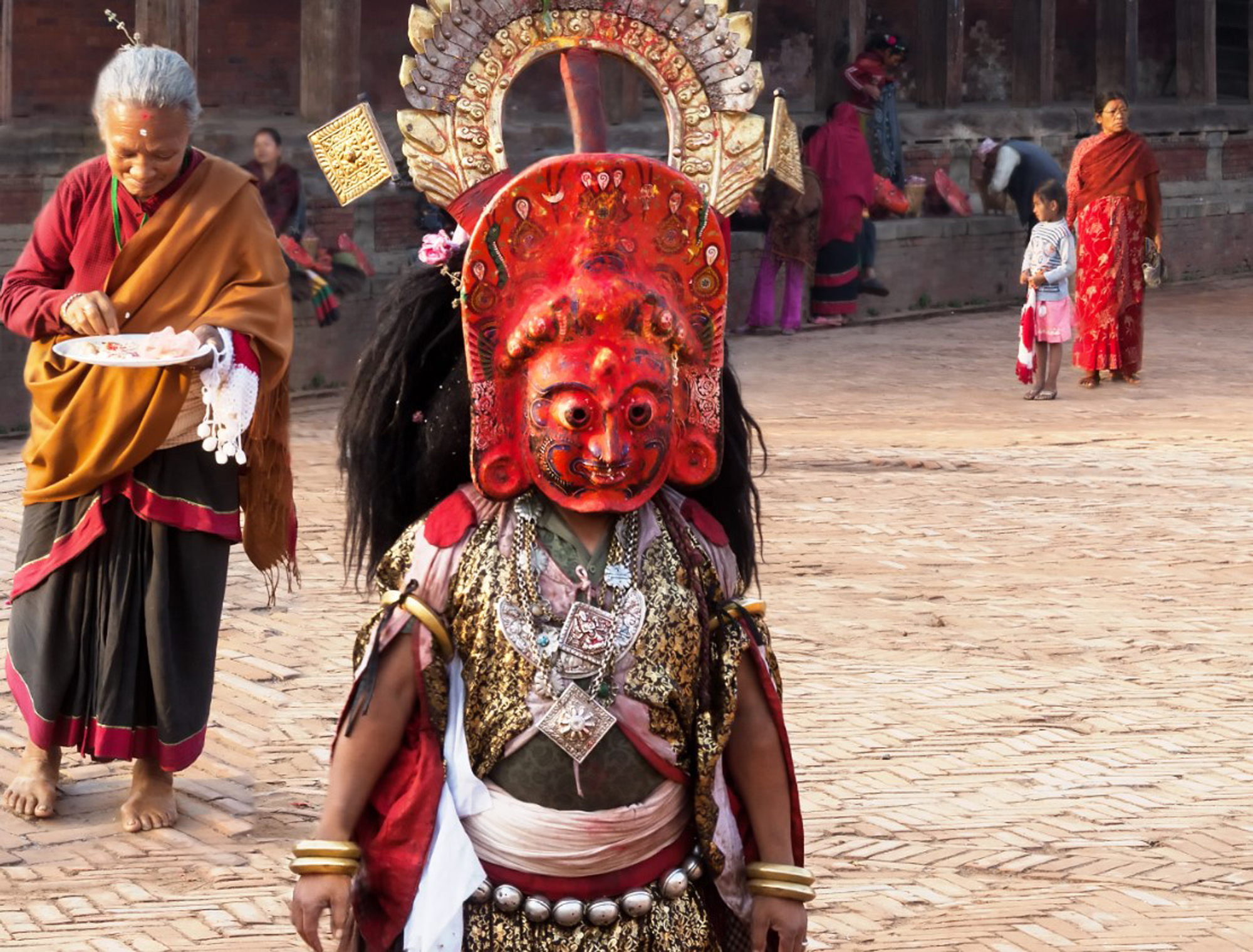Valley
Everything you need to know about the Guthi Bill
The bill, which proposes controlling all public and private trusts, has outraged the Valley’s indigenous community
Arpan Shrestha
In November last year, finance minister Yubaraj Khatiwada, speaking at the 55th anniversary of the Guthi Sansthan—the government body that oversees all guthis in the country—stressed the need to develop the Sansthan as a modern social corporation that safeguards its historic existence.
It was unfortunate that the Sansthan had remained idle without generating income in the name of property protection, the minister said while expressing his readiness on behalf of the ministry to foster the development of the Sansthan.
Then, earlier this year, on April 29, Minister of Land Management, Cooperatives and Poverty Alleviation Padam Kumari Aryal tabled a bill at the Upper House that would consolidate all acts and amendments related to guthis. But the bill also proposed a powerful commission to replace the Guthi Sansthan and to nationalise all guthis, both public and private, and regulate all religious sites.

Since then, the Guthi Bill has received serious objection from members of Kathmandu Valley’s Newar community, who have been holding protests, mass meetings and rallies calling for the immediate withdrawal of the bill.
The protests, which began on June 9—the concluding day of the Rato Macchindranath Jatra—are only getting bigger, despite assurances from the ministry that concerns will be taken into consideration before the bill is passed. However, the Newar community believes that the bill is designed to erase history by wiping out the institutional memory of various indigenous communities, and thus must be immediately dropped.
Here is everything you need to know about the Guthi Bill.
What is a guthi?
Guthis are socio-economic institutions that fund their obligations from incomes off of cultivated or leased land as assets. Guthis fulfil religious public services and social roles, and could either involve members from a common lineage, or several.
The origin of guthis can be traced back to fifth century Nepal. They can arguably be considered the country’s first land pooling system, where the community tilled endowed land to generate revenue, which would then be mobilised to maintain temples, public shelters or water sprouts, or organise chariot processions and religious performance art. Guthis also provided fellowships for the arts and various other professions.
How guthi lands were nationalised and occupied
The ancient and unique practice which sustained the agrarian Newar community has been passed down from generation to generation. It’s exactly how garden-variety guthis today continue to observe rituals or traditional practises, and organise both religious and social festivals in the Kathmandu Valley. But not without challenges.
At various points in Nepal’s history, both the state and its rulers have occupied or nationalised guthi-endowed lands for personal or state use. Rana-era palaces, government buildings, including Singha Durbar, and a number of hospitals were once land cultivated by trustees from guthis. The nationalisation and occupation of guthi lands have wiped out many guthis and also resulted in financial crises, directly impacting heritage conservation.

How the Guthi Sansthan was created
In 1964, the government set up a corporation—the Guthi Sansthan—to nationalise all guthi land. There was little opposition then, as public unrest those days was rare and easily suppressed. With all the endowed land that the government had nationalised, the Sansthan would generate revenue by leasing land out to individuals and companies or by building business complexes to rent. The income would go towards partially funding rituals and festivals. Today, the Sansthan currently oversees 1.45 million ropanis of land across the country with some 2,335 public guthis incorporated under it. The numbers are only expected to grow once the Survey Department prepares its final report.How do guthis function today?
Five decades on, guthis fare no better, as the Kathmandu Valley has become one of the fastest growing metropolitan areas in South Asia. The Sansthan still doles out the same amount of money that it did in the ’60s, and guthis face serious financial burdens fulfilling their immediate obligations, including holding some of the Valley’s most popular jatras.
The lack of funds has directly affected heritage maintenance and various religious and cultural performance arts, along with fellowships for young people in the community. The spectacular Kartik Naach, organised annually in Patan Durbar Square’s Dabali, for instance, is only possible through donations from locals and private entities. Most other masked dances that were alive until the early ’90s in various communities no longer exist, and those that do hold precarious positions, uncertain if they will last until next year.

What are the problems with the Guthi Bill?
It’s 1964 all over again.
The Guthi Bill, which is currently with the Upper House, proposes repressive provisions that would nationalise both private and public guthis, regulate all religious sites, and replace the Sansthan with a powerful commission. The Newar community sees this as the final straw in the systematic erosion of indigenous Newar culture and rights by the state.
According to trustees, the bill violates the constitutional rights of citizens as Article 26 (2) of the constitution says that every religious denomination shall have the right to operate and protect its religious sites and religious guthi.
But Sections 23 and 24 of the Guthi Bill are riddled with contesting and ambiguous provisions that will allow the proposed commission to take over all rights and responsibilities of the guthi, including all trustee rights. The bill would take precedence over all other rights, documents and past agreements, even court orders.
Section 4 (6) of the bill also proposes nationalising and regulating all private guthis, which trustees say is insensitive and in utter disregard of the different kinds of guthis and their functions in Newar society.
Private guthis are exclusively for family members who share the same lineage and outsiders are barred from the guthi’s rituals.




 11.12°C Kathmandu
11.12°C Kathmandu










